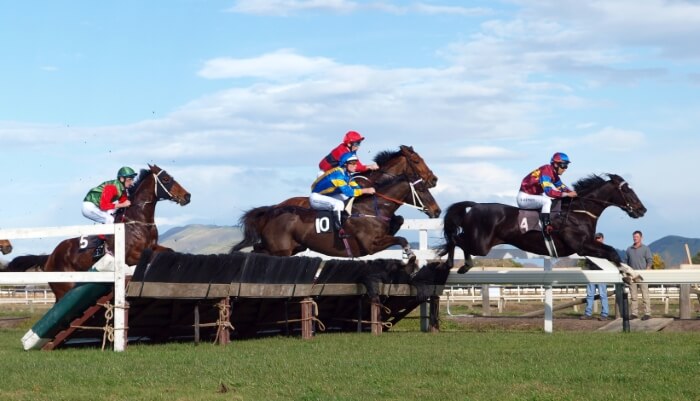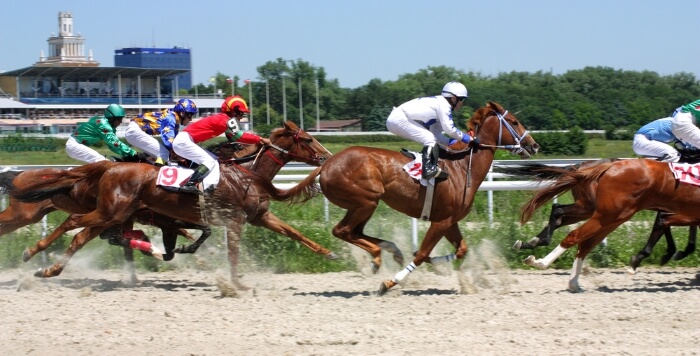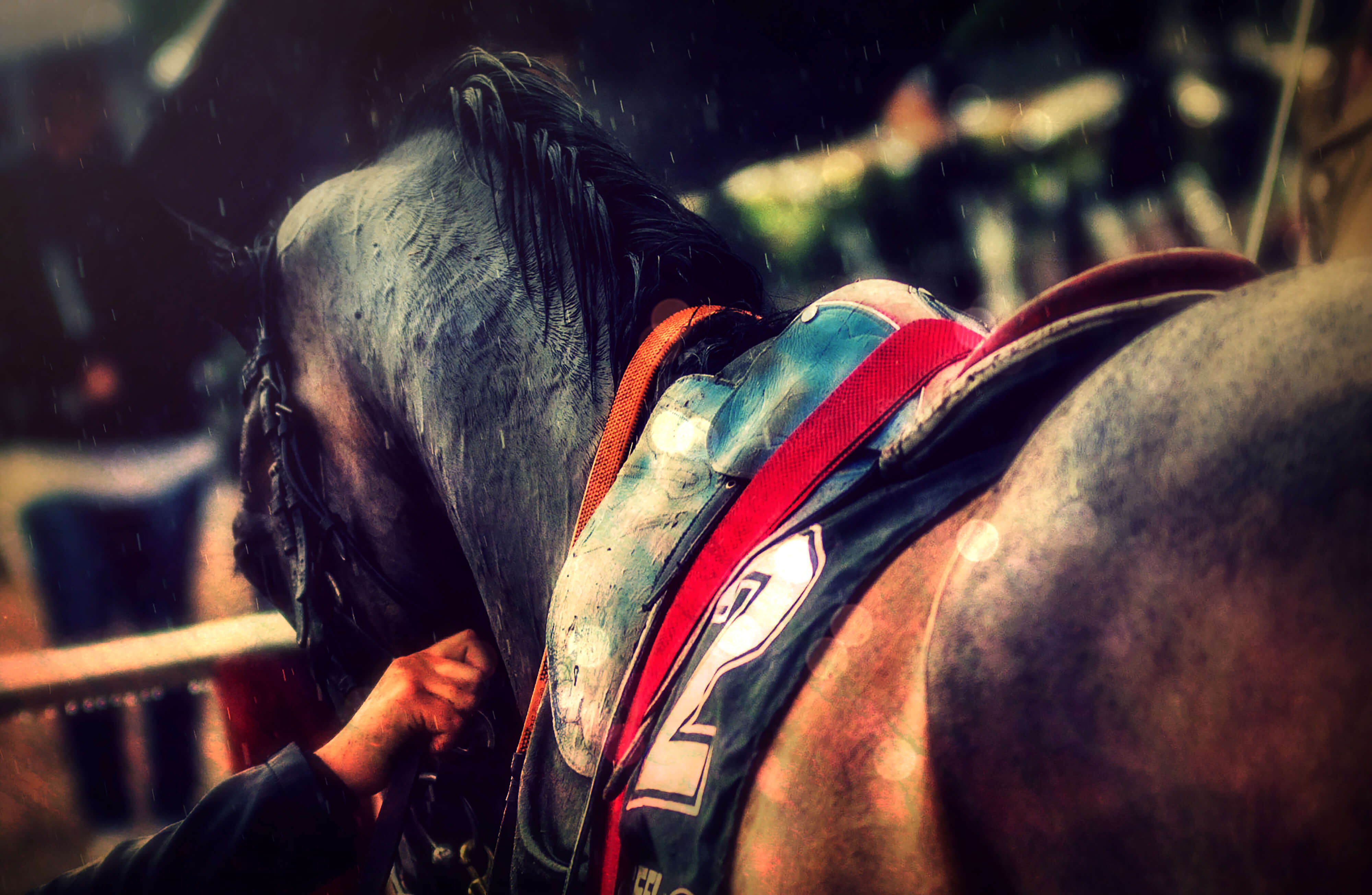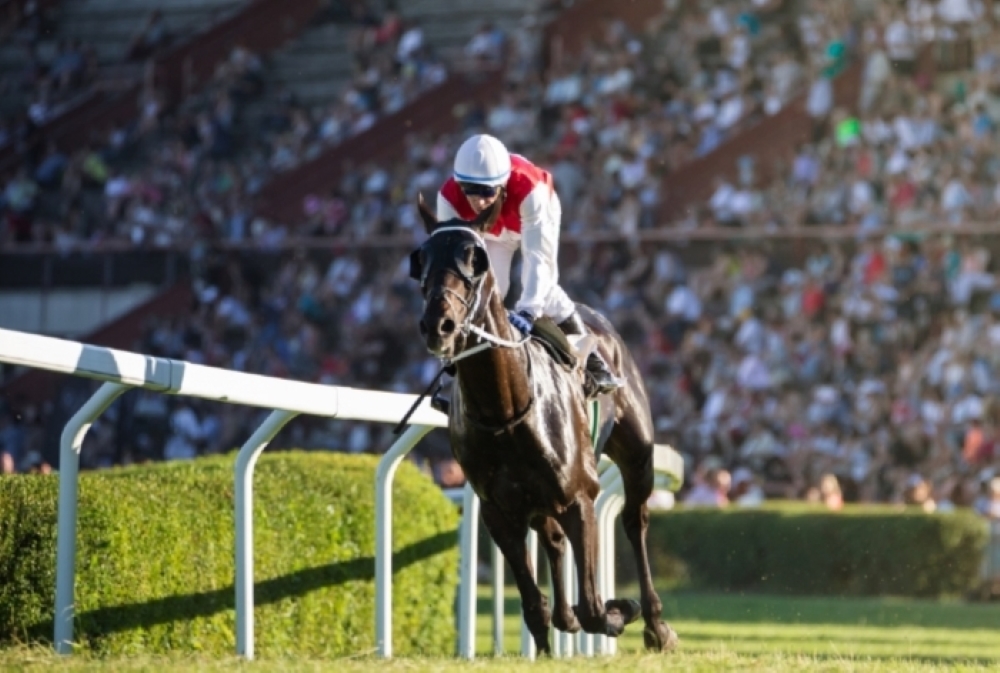Commercial content | New Customers Only | Wagering and Terms and conditions apply | 18+ | Play Responsibly
Truly “The People’s Race”, the Grand National is back and it promises to be bigger than ever for punters. With no race in 2020, everyone from once-a-year players to professionals are looking forward to getting involved.
Ante post betting is all about staying informed about the runners’ recent form, odds and choosing the offer that best matches your betting style. The ante-post market is massive, but betting is truly shaken up after the Cheltenham Festival and after the final declarations.
Grand National betting in 2024 will not be dominated by dual winner Tiger Roll this time, as ante-post odds are in favour of the 2021 favourite Cloth Cap. Now the weights have been published, we know a little more about who has a chance of landing the 173rd running of the world’s greatest race.
- Finishing Runners' SP Grand National 2024
- The Basics of Grand National Ante Post Betting
- Grand National Betting Tips 2024
- The Benefits of Grand National Ante Post Betting
- Ante Post Market
- Grand National Ante Post Betting: The Potential Pitfalls
- Grand National Ante Post Betting Rules
- The Grand National and Betting Exchanges
- Grand National Ante Post Betting Closing Comments
- FAQ
Finishing Runners’ SP Grand National 2024
In a fascinating ante-post market the likes of Cloth Cap, Kimberlite Candy, Any Second Now, Burrows Saint and Easysland have all shown up well. With so many runners still on the board, it’s worth mentioning more horses that are performing very well. Here’s a list of the key runners:
- Cloth Cap
- Kimberlite Candy
- Any Second Now
- Burrows Saint
- Magic Of Light
- Potters Corner
- Santini
- Discorama
- Lake View Lad
- Lord Du Mesnil
- Anibale Fly
- Bristol De Mai
- Yala Enki
- Milan Native
- Canelo
- Farclas
- Class Conti
- Minella Times
- Double Shuffle
- Shattered Love
- Vieux Lion Rouge
- Le Breuil
- Hogan’s Height
- Ok Corral
- Chris’s Dream
- The Long Mile
The Basics of Grand National Ante Post Betting
Ante-post betting, known as ‘futures’ betting in some places, essentially means betting on races before the final declarations. This is often done months in advance of the Cheltenham Festival, The Derby, Royal Ascot and naturally the Grand National.
After final declarations, which in the case of the National is two days before the race, ante-post bets are off. At this point, odds usually shrink as we know for sure who is now taking part.
Betting ante-post then is great for receiving bigger prices, though usually if your horse doesn’t run you lose out. This can be rectified if your bookie is offering a ‘non-runner, no bet’ deal.
As the Grand National is the biggest betting event of the year, prices are always up early. Punters have been betting on this race pretty much since the last one was due to end. Here are the main points regarding ante-post bets:
- Ante-post is ‘futures’ betting, often with markets published months in advance of the race.
- Odds are usually higher, as there are way more horses quoted than will ultimately take part.
- If your ante-post horse doesn’t run, you lose the stake (unless you have an NRNB deal).
- Once the final declarations are in, the ante-post market closes.
Grand National Betting Tips 2024
Since the weights for the 2021 Grand National were published, much has changed. Tiger Roll has been allocated to carry higher weights given his current form, which lead to the decision to remove him from the race. Others such as Secret Reprieve look well treated.
At the ante-post stage, at least 25 horses are in with a genuine shot at winning this great race. Of the final 40, at least ten will be well backed to score which shows how competitive this race is.
Here are our thoughts on some of the top horses in the market for the 2021 Grand National.
Cloth Cap
An understandably popular choice, Cloth Cap represents strong form and also a three-time National-winning owner. Trevor Hemmings is the man involved and he knows exactly what it takes to win this race.
For his part, Cloth Cap destroyed a good Ladbrokes Trophy field over 2m3f at Newbury in November. That win made him favourite for this race, with 10st 5lbs not much of a burden either.
Kimberlite Candy
Tom Lacey’s horse has just about everything required. He is at his peak at nine years old, stays very well and has proven he can handle these fences.
Twice the runner-up in the Becher Chase at Aintree, the only thing holding him back would be bad luck. 10st 10lbs looks a lovely racing weight for him too and he stands a massive chance.
Easysland
Under the same ownership as Kimberlite Candy, this one is trained in France. A crack cross-country horse, Easysland defeated Tiger Roll at Cheltenham in 2020 and is once again favourite for his race at the Festival.
A classy individual, Easysland has been handed a big weight but he stays all day long. He won’t mind the Aintree fences either.
The Benefits of Grand National Ante Post Betting
An ante post bet up to 12 months in advance of the Grand National is a significant commitment. There are obvious risks but they can be offset by a number of benefits. The advantages of ante post betting on Grand National are published by the bookmakers and the main ones are described below:
The potential for better value
Ante post bettors are attracted by the potential for some value in the odds. A punter may have some information about a horse that is not in the public domain. A shrewd gambler may recognise qualities in a horse that have not been fully exposed by the form.
Information is key and a potential bettor who has some specialist knowledge can gain an edge over the bookmakers and identify some value. A well-informed bettor may believe a potential runner will be a shorter price on the day of the race than in ante post betting on Grand National.
Better odds than on race day
The art of bookmaking is to offer odds on outcomes of an event to attract balanced betting across all the options. The Grand National ante post betting market is framed with many potential runners in mind.
Bookmakers know some of these horses will not run in the Grand National so they can offer better odds in ante post betting than on the day of the race.
The field is limited to 40 runners so many horses quoted in Grand National ante post betting will not run. Bets on non-runners are not refunded which means bookmakers can afford to offer better odds in Grand National ante post betting. These factors are important elements of Grand National ante post tips.
Ante Post Market
Given that ante-post betting is available all year round on the Grand National, it is a huge market. Millions are exchanged, just as they are for events such as The Ebor, The Derby and the Cheltenham Gold Cup.
Regular players keep an eye on the ante-post markets all through the season. If you like a horse for the National and it is about to run in a prep race, it’s often good to place your advance bets at that point. Should the horse in question win, its odds for the big race may reduce significantly.
Grand National Ante Post Betting: The Potential Pitfalls
Ante post betting has its inherent risks but there are also benefits. Bettors who invest in a Grand National ante post bet up to a year in advance of the race could potentially be holding a great bet but there is a downside.
The stake money is tied-up for several months and the bet is subject to price changes. The race often produces plenty of Grand National ante post tips.
The following potential pitfalls should be considered when thinking about ante post betting for Grand National:
The backed horse might not run in the Grand National
Bookmakers are happy to take ante post bets on any future race because if a backed horse is withdrawn before the day of the race stakes are not refunded. Several bookmakers introduce the Non-Runner/No Bet concession in the weeks leading up to the race.
Once this rule has been introduced backed horses who are pulled out of the race count as non-runners for bet placement purposes. The Grand National has a maximum field of 40 runners but many more are quoted in the betting.
A horse could suffer an injury, not qualify or be targeted at another race and hence not run. Bettors should take this into account when making bets on the Grand National.
The best odds are not guaranteed
The attraction of ante post betting on any future horse race is the potential for better odds than available on the day of the race. Bookmakers have to provide potential bettors with an incentive to lock up money for up to 12 months.
That incentive might be extra places or enhanced odds or simply the potential for better odds than the Starting Price on the day of the race.
Even getting to the line-up for the Grand National is not assured because horses are susceptible to injury and loss of form. A horse who runs well in the autumn could underperform in spring which means the Grand National ante post betting odds offer less value than the odds on the day of the race. Horses can shorten but also drift in ante post betting on Grand National.
Changes in ground conditions and the field make-up
The Grand National is run over four miles and two and a half furlongs and there are 30 obstacles. That’s two circuits of Aintree Racecourse and there are 16 fences on the first circuit and 14 fences the second time around.
The distance was reduced a few years ago to take the start away from the stands but the intrinsic nature of the Grand National has remained unaltered for over 100 years. However, if there is a great deal of rain in the weeks leading up to the race, the going could change from good to soft.
Formerly unconsidered horses could enter the betting after running significant trials. Other runners could experience a dip in form so there is always the potential for the odds to change in Grand National ante post betting. These factors are important when assessing the best Grand National ante post tips.
Grand National Ante Post Betting Rules
Ante post betting on horse racing is straightforward and there are no hidden rules or restrictions. Bookmakers may restrict stakes on big-priced horses but this practice is less likely in Grand National ante post betting.
The race attracts massive turnover over up to one year so bookmakers have plenty of time to adjust their odds and balance the books. However, certain rules do apply across the board and these rules have to be considered before placing bets on ante post betting for Grand National especially when the bets are based on Grand National ante post tips:
Non-runners are losing bets
In the early stages of Grand National betting any non-runners are seen as losers for bet settlement purposes. If a horse is deemed to be a non-runner all stakes are returned. Ante post bets are classed as runners so stakes on withdrawn horses are not returned.
This rule gives bookmakers a significant edge and allows them to be flexible with their odds for the remaining runners. This rule applies across the industry until the introduction of non-runner/no bet. This rule should be considered when identifying Grand National ante post tips.
Odds at the time of the bet apply
Bets placed in Grand National ante post betting are settled at the odds at the time of placing the bet. Many bookmakers offer Best Odds Guaranteed (BOG) but this promise is only introduced the night before the race or the morning of the race.
Most bets in Grand National ante post betting are paid out at the price when the bet is accepted. Horses may drift or shorten in the betting which means the Starting Price is different to the ante post price but the latter applies for bet settlement.
Non-runner/no bet (NRNB)
Grand National ante post betting increases when bookmakers introduce the non-runner/no bet rule. This usually happens in mid-March for a race that takes place early in April. The rule provides insurance against a horse being withdrawn before the day of the race.
The NRNB concession also comes into play if a horse does not qualify for the race. The maximum field is 40 runners but many more horses will have been quoted in Grand National ante post betting so stakes are returned for non-runners.
The Grand National and Betting Exchanges
Potential bettors on ante post betting for Grand National should consider a betting exchange. These operators allow customers to back and accept bets on outcomes. The betting exchange brings backers and layers together to match bets. The leading firms in this field introduce Grand National ante post betting up to 12 months before the race takes place.
The operator makes money on commission and not the difference between bets and payouts. Betting exchanges can offer better odds and provide a mechanism for laying Grand National bets.
Betting exchanges do not apply NRNB and all horses are considered runners even those who don’t take part.
Betting exchange activity is a major part of ante post betting for Grand National. A layer can in effect place a bet on a horse not winning as long as a counter bettor wants to back the same horse. The bet is struck at a mutually beneficial price and there is a backer and layer.
If a horse is withdrawn the lay bet wins and bets are settled accordingly. The customer who layed the outcome has a winning bet ahead of the race because the horse did not win the Grand National.
Back bets placed during Grand National ante post betting can be cashed out to guarantee a profit or limit the loss regardless of the outcome. The back price could be 20/1 and shorten to 10/1 which puts the backer in a strong trading position. The cash out value depends on the original stake and odds and the odds at the time of the cash out stake.
If the odds move in favour of the bet, the bettor can lock in a profit even if the backed horse does not win the Grand National. Conversely, the payout is restricted if the odds move in the opposite direction.
Grand National Back And Lay Example
Let’s assume the horse is backed at 33/1 with the betting exchange of fixed odds bookmakers and the lay price with the betting exchange is 20/1. If the stake unit is £10 here are the bets and potential outcomes:
Backed and layed horse wins the Grand National:
- £10 back bet at 33/1 means a profit of £330.
- £10 lay bet at 20/1 means a loss of £200.
- Net profit of £130.
Backed and layed horse does not win the Grand National:
- £10 back bet at 33/1 means a loss of £10.
- £10 lay bet at 20/1 means a profit of £10.
- Break even which equates to a free bet.
This illustration shows the value of using a betting exchange rather than a fixed odds bookmaker when considering ante post betting for Grand National. The odds on offer are generally better with a betting exchange than traditional bookmaker.
However, the back bet has to be matched with a lay bet and sometimes this is not possible at the advertised odds. The stake could be fully or partially matched or the market could reject the bet which means the odds have to be reduced. A good source of information for these bets is Grand National ante post tips.
The mechanics of an exchange are an important element of any Grand National ante post betting. If the odds move in favour of the bet, the betting exchange can be used to lay a horse that was previously backed at better odds.
It is common for shrewd bettors to back a horse in anticipation of a good trial for the Grand National. The odds on the impressive winner of a key trail or prep race may fall significantly which means the backer is in a strong trading position in ante post betting on Grand National.
Grand National Ante Post Betting Closing Comments
Betting is not an exact science and certainly Grand National ante post betting is vulnerable to many variables. This comment applies to Grand National ante post tips.
The circumstances may change in favour of the bettor or conversely events could transpire against bet. Betting on the Grand National is subject to many ifs, buts and maybes.
In any fluctuating betting market there are winners and losers and this applies more often with Grand National ante post betting. A customer could be holding a valuable ticket or a losing bet depending on events leading up to the race and the vagaries of betting.
Here is a summary of the factors that can influence Grand National betting:
- Injuries.
- Loss of form.
- Improvement in other horses.
- Weight allocation.
- Weather conditions that affect the going.
- Special bookmaker offers.
A horse could have been backed at 50/1 and is 20/1 on the day of the race or 100/1 on race day or not even in the field. Ante post betting based on Grand National ante post tips and personal opinions has ups and downs and that will certainly be the case for the 2021 Grand National.
FAQ
Here’s all you need to know about the state of the ante-post Grand National 2024 market.
Who is the Current Favourite for the Grand National 2024?
Cloth Cap. This could change after Cheltenham, but for now, Jonjo O’Neill’s runner heads the market.
Which Favourites Stand Out in the Ante-Post Market?
Along with Ladbrokes Trophy winner Cloth Cap, a couple of others stand out. Kimberlite Candy has the perfect profile for the race and will be very popular. Classy stayer Easysland is another who, if the ground isn’t too testing, could put up a bold show.






